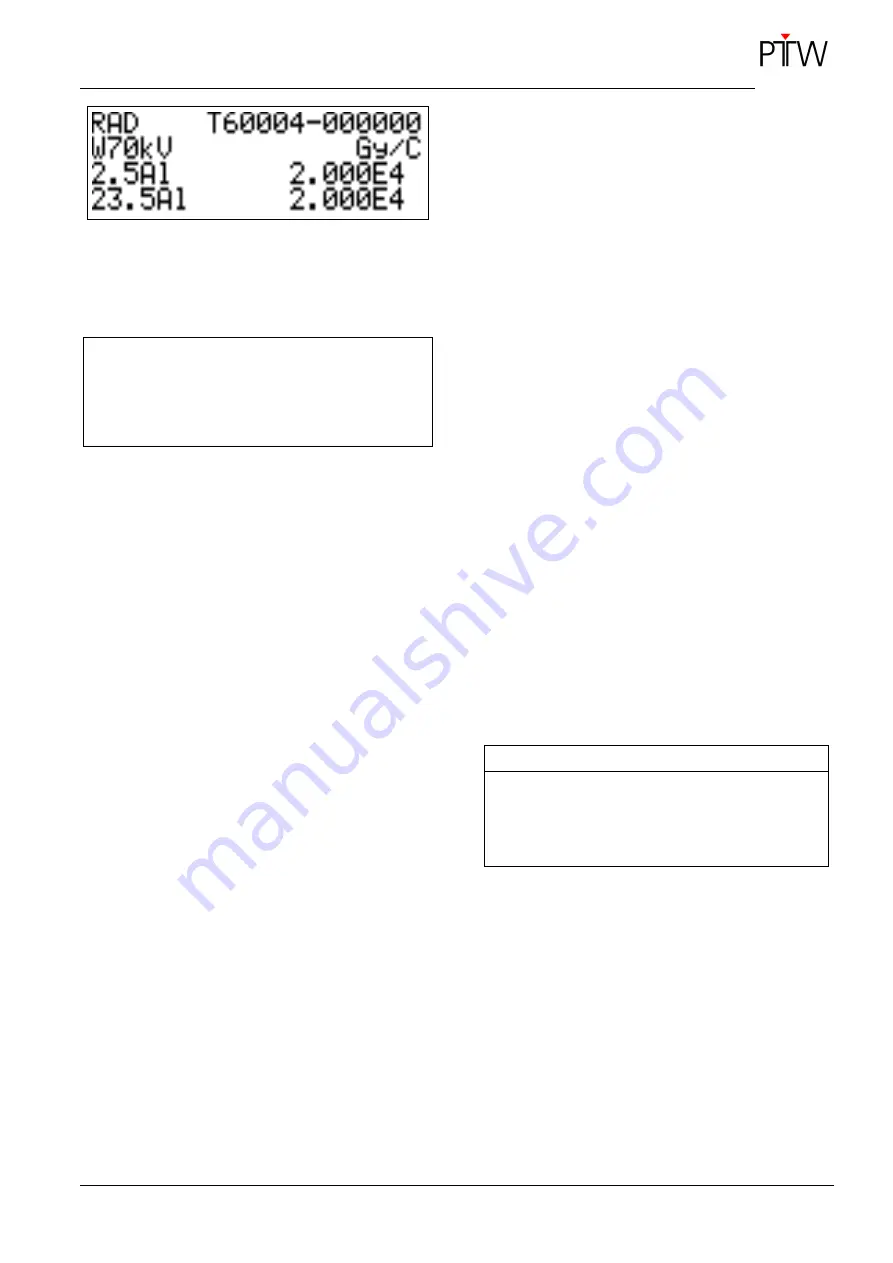
DIADOS E
T11035
Operating Manual
– Putting the System into Operation
D616.131.00/10 en
23
Figure 13:
Calibration data menu, example for the
RAD application
The data shown in Figure 13 represent:
Application
detector type and number
Calibration point
calibration factor unit
Filter
calibration factor
Filter
calibration factor
Display Menu
During the test the display briefly shows all possible
characters. The test can be interrupted by activation
of any of the keys. After the test the submenu re-
mains on the display.
The display contrast can be adjusted between 0
and 9. Press
to confirm a selection.
Auto Off [min]
Set the time for DIADOS E to switch off automati-
cally when no controls are activated. The tens and
ones must be set individually and confirmed with
.
Set the tens first. With
ALT
you exit the submenu
without saving changes.
Measuring Delay Time
Set a time between 1 and 5 s. The measuring delay
time is waited after an automatic recognizing of the
signal end. Then the measurement is regarded as
completed and will be finished. Times longer than
1 s are meaningful if radiation distances are bigger
than 1 s to expect. The total dose can be measured
for several radiation pulses with big distances by it.
2.6 Modes of Operation
DIADOS E offers two modes of operation, the
nor-
mal mode
and the
pulsed mode
, which are select-
ed via the MODE key. In the normal mode, the de-
vice measures dose, dose rate and time and a
timed measurement can be performed. In the
pulsed mode, the device measures dose, dose per
pulse and number of pulses.
2.7 Measuring Quantities
DIADOS E measures air kerma
K
a
(unit: Gy), air
kerma rate
a
K
(unit: Gy/s), air kerma length prod-
uct (unit: [Gy*cm] or [R*cm]), air kerma length prod-
uct rate (unit: [Gy*cm/s] or [R*cm/s]). The selection
has to be done in the
Unit
setup menu. The electri-
cal unit C for measurement of the current (unit: A)
or of the charge (unit: C) is also selected in the
setup menu.
NOTE
For measurements where an official calibration is
required, only the following measured quantities
are allowed:
K
a
,
a
K
,
K
a
∙l
and
a
K
∙l
(refer to sec-
tion 8.5).
















































